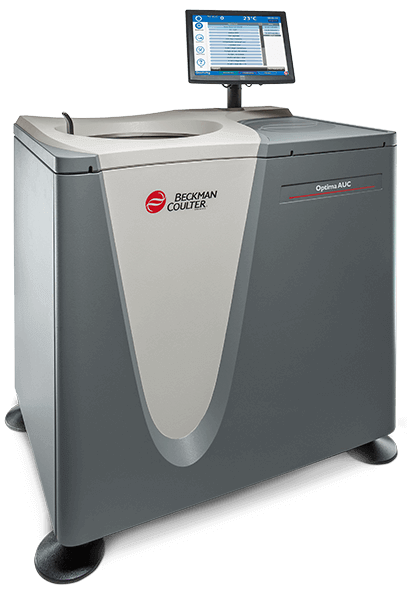Beckman-Coulter Optima AUC

Location - Britannia 107
For enquiries, please contact - Dr. Karin Smorodinsky-Atias
The information provided in this section is taken from “ProteomeLab XL-A/XL-I - Instructions for Use” by Beckman Coulter and “Introduction to analytical ultracentrifugation”, Ralston, G.B., 1993: Beckman.
Analytical ultracentrifugation (AUC)
This method is used to determine the molecular weight as well as the hydrodynamic and thermodynamic properties of macromolecules in solution, over a wide range of conditions (such as concentration, temperature, ionic strength and pH).
Briefly, the concentration distribution of macromolecules is optically monitored in real time, while subjected to a gravitational field.
Sedimentation velocity and sedimentation equilibrium experiments can be done with the instrument.
The measurements are based on the first principles of thermodynamics and hydrodynamics, therefore, no standards or calibrations are required.
Used to determine
-
Sedimentation coefficient
-
Diffusion coefficient
-
Concentration
-
Homogeneity
-
Buoyant density
-
Association and disassociation constants
-
Ligand binding
-
Stoichiometry
Type of samples
-
Nucleic acid
-
Proteins
-
Virus particles
-
Carbohydrates
-
Organelles
Advantages
-
Label free
-
Accurate
-
Small sample size
-
Wide range of molecule sizes
-
Non-destructive to the sample

